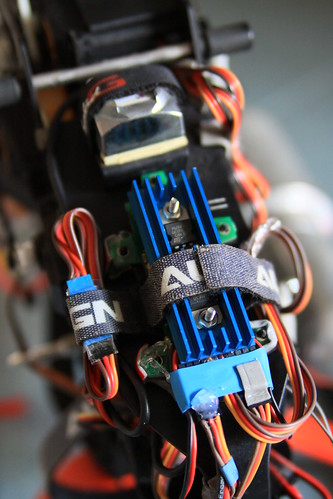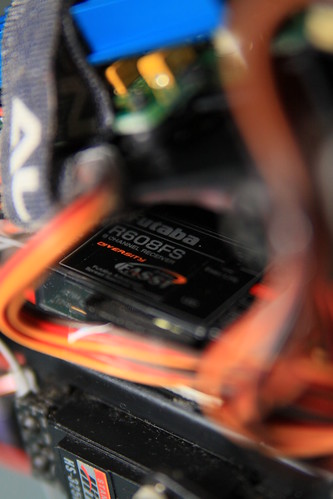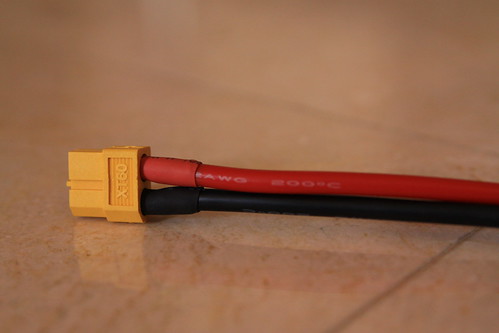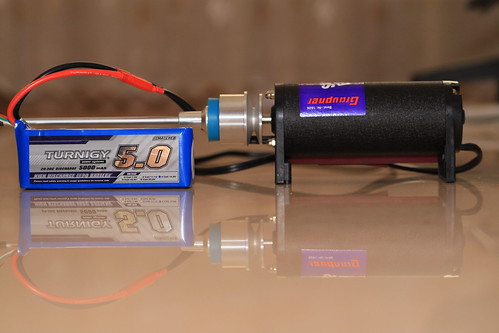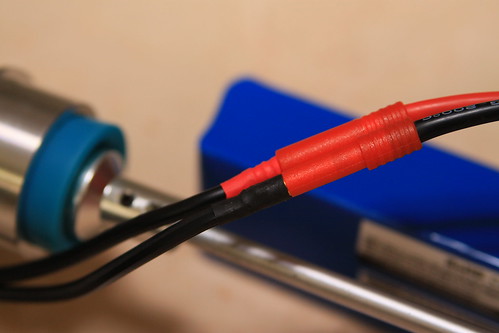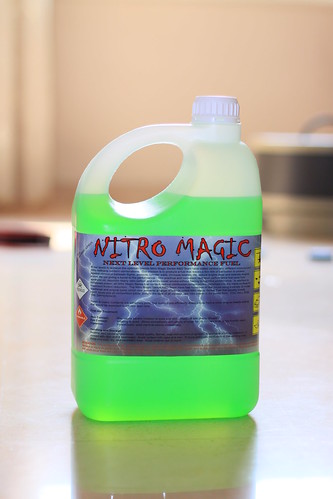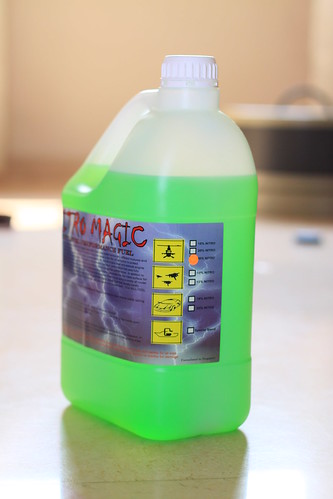(PLS skip to the picture part if you don't feel like reading...it is at the bottom, scroll down...)
Background story...
On the very last wednesday of 2009, I got my first mid size e-heli, a e-raptor, from a nice brother here. Since then, it has been POWER POWER AND POWER all the way, with PROBLEM PROBLEM AND MORE PROBLEM.
I got a HK4025-740kv from
RCS at around the same time and this motor on 10s is just INSANE. I also got a jive 60+hv from readyheli with some gift cert I had leftover from my days at rcheliresouce+some top up.
Under normal weekend stick banging condition, I tend to average around 42-45A. Yet, base on the amount of power I charge back into my lipo after a flight, I calculate that my esc is easily doing an average of over 50A when I really push it to my limit. Under ideal condition and ideal climate and weather with a heatsink, the jive 60+hv should have been more than enough, considering that many mikado guys are running a heatsinked jazz55 on their logo 500/600. Yet, the above statement sums up my problems. I was getting thermal issue and I suspect, current spike protection. It is not the least bit suprising because,
1. The logos are much lighter and haven't got a flybar.
2. They run a properly attached heatsink, while I don't even have one because I read that they can get rip out in crash and destory the jive if you are unlucky.
3. Flying in 30+degree hot afternoon=more power from lipo and things getting hotter.
And so...I lupe a jive 120+hv on to the e-raptor. No more thermal issues and no more unplanned motor cut. It was just fantastic. A tiny box with impressive integrated bec and amazing governor...not that the jive60+hv wasn't, but this 120A version is only just a bit larger. Impressive. I was really enjoying every flight and flew the e620 almost everyday.
Unforunately though, good things don't last and I got the infamous 7 led of death soon enough on cny. What happened was that the jive 120+ just cut out mid flight. After which, it shows 7led blinks and refuse to spool up even with power cycle. It does not seem to be an isolated issue because some others I know on helifreak and archeli has the same problem. According to someone who I think I can trust, kontronik did not gave him warranty for his 10flights old 120+hv, citing reason of REVERSE POLARITY...which is just bull because like me, he uses bullets connector with male and female on different polarity...i.e. there is no way you can actually fit the wrong +/- even if you are colour blind or literally blind, much less in flight. The worse part is that kontronik didn't even offer to repair it for a price.
Ken from
RCS has offered to send it back to kontroniks...another reason to buy LHS. Hope kontronik will fix it, or at least offer to repair it for a low price.
Since I cannot afford another kontronik at the moment, I started looking at alternatives and the one that stands out and I really want to test is the Mega Power 120A HV esc. As usual, a few sms and I was at Pang(
Heliguru)'s home collecting the ESC. I choose this because even in the event that I get a 90size electric, it should still be decently sized.
Ok...on to the ESC. This esc comes with a optional programming box, a common way for programming ESC. So the product comes in two boxes-One containing the ESC and the other the programming box. From what I know, they are sold seperately.
Both the ESC and the box came very well protected and package with foam, unlike the most of the other ESCs that are on the market that comes in either ziplock bag or a tiny box without any protective wrap.
Mega power also has a 100A and 75A 12s capable hv ESC.
Size Wise, this ESC is quite a bit larger than the jive 120+ and the CC85HV that is ever so popular. The Mega Power 120A HV has a larger footprint, thicker body and is heavier than the other two ESC. A fairer comparsion might be the Mega Power vs CC110HV, but unless someone is going to buy me a CC110hv or the coming ICE125HV, I am not going to get a ESC just to take photo. Nonetheless, it is still way smaller than the Turnigy or Hobbywing ESC that are really big. Build quality wise, I really have got nothing to complain about because everything is enclosed in the box and even the capacitors are "embedded" in the casing. The cooling fan is probably a god-sent feature that will be great for our local climate, especially if you are mounting the ESC within the canopy.
The cooling fins look big and rugged and the wires are of appropriate guage size. Nothing to complain here either. On my first few power up, there was NO Spark from the higher voltage lipo and I realise that this has actually got a SPARK ARRESTOR BUILT IN.
One thing to note when comparing the three is that the Jive actually has a VERY STRONG bec built in, while with the rest, you have to add a BEC to power your RX, so w/o a doubt, the JIVE is going to make your heli the lightest of all.
Onto the programming box, this box is exactly the same as the one Tahmazo uses for their ESC and guess what, the Tahmazo ones work on the Mega Power ESC...I am not sure about the larger ESCs, but I have had very good experience with the 60A 6s esc on my school project.
Haven't done any test flight on the ESC yet because...the scorpion uses the Hyperion Conpro connectors which are not very common...probably will just make do with 4mm bullets.


